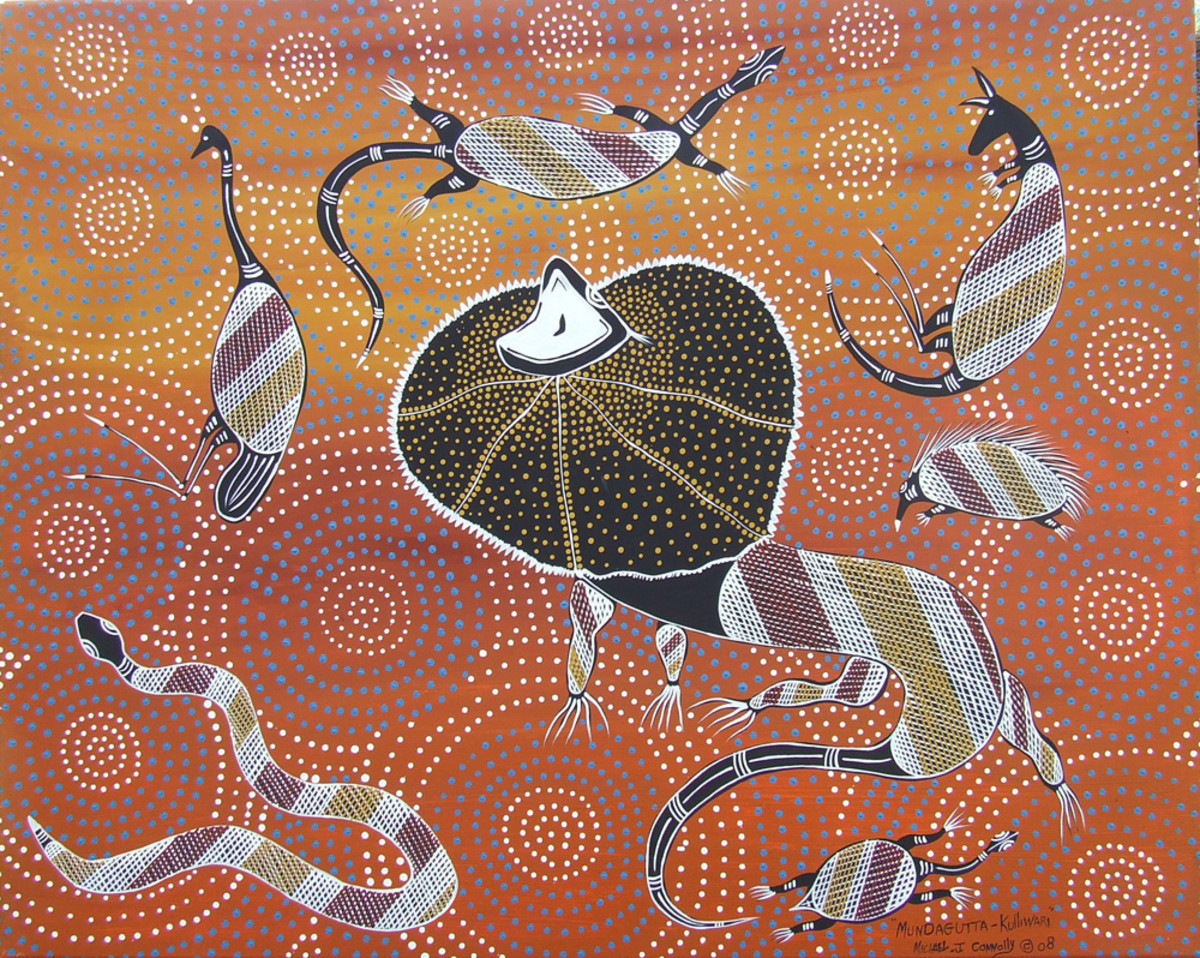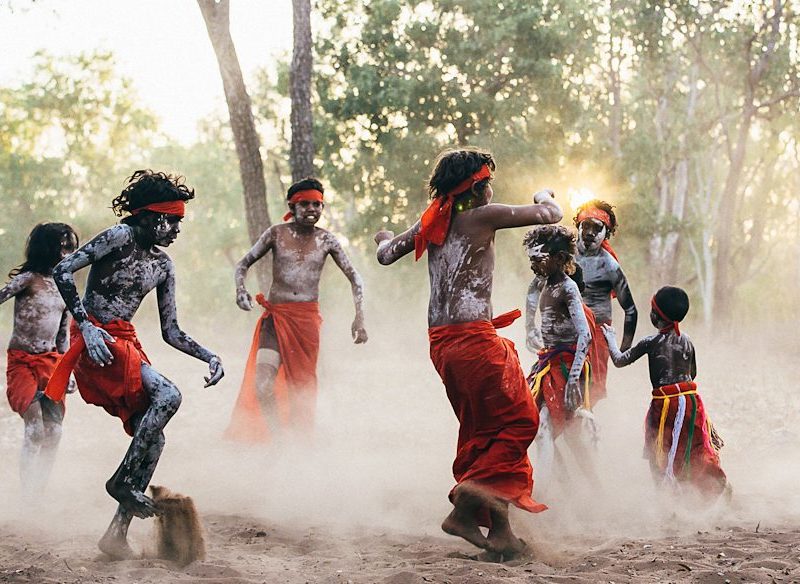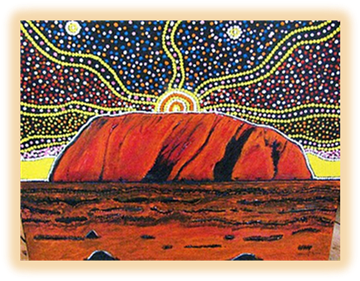The Dreaming: Understanding the Heartbeat of Aboriginal Culture
The Dreaming: Understanding the Heartbeat of Aboriginal Culture

The Dreaming, also known as the Dreamtime, is a fundamental concept in Aboriginal Australian culture. It’s not simply a collection of stories or myths, but a living, breathing reality that underpins their worldview, spirituality, and connection to the land. It’s a complex and multifaceted concept that encompasses creation, history, law, and the very essence of being Aboriginal.
This article delves into the depths of the Dreaming, exploring its significance, its intricate connection to the land, its role in daily life, and its enduring power in contemporary Aboriginal society.
Related Articles: The Dreaming: Understanding the Heartbeat of Aboriginal Culture
- Unveiling The Tapestry Of Australia: A Journey Through Indigenous Maps
- The Power Of Black: Understanding The Significance Of Black In Aboriginal Culture
- Unraveling The Origins: The Etymology Of "Australia"
- A Journey Through Time: Unveiling The Secrets Of Tontem Chapel
- The Black Represents: Unveiling The Meaning Behind The Aboriginal Flag
The Genesis of the World: The Dreaming as Creation Story
The Dreaming is the foundation of Aboriginal cosmology, explaining the creation of the world and all its inhabitants. It’s a time when ancestral beings, powerful spirit beings, roamed the land, shaping its features and leaving behind their essence in the landscape. These beings were not just creators but also the lawgivers, establishing the social and spiritual order that continues to guide Aboriginal communities today.
The Dreaming stories are not mere fables but living narratives that connect the present to the past. They offer a tangible link to the ancestors, reminding Aboriginal people of their responsibility to care for the land and uphold the traditions passed down through generations.
The Land as a Living Canvas: The Dreaming and Connection to Country
The Dreaming is intimately entwined with the land. The landscape itself is a physical manifestation of the Dreaming, a map etched with the journeys and actions of the ancestral beings. Every rock formation, waterhole, and tree holds significance, representing a specific ancestral being or event.
For Aboriginal people, their connection to the land is not simply a geographical one but a spiritual one. The Dreaming imbues the land with a sacredness, making it a source of identity, knowledge, and sustenance. It’s a place where stories are told, ceremonies are performed, and the connection to the ancestors is felt most profoundly.
Living the Dreaming: Its Role in Daily Life
The Dreaming is not a concept confined to the past; it’s a living force that shapes every aspect of Aboriginal life. It dictates social structures, cultural practices, and even everyday actions.

- Social Order: The Dreaming establishes kinship systems, defining family relationships and responsibilities. It outlines the roles and obligations of individuals within their community, ensuring social harmony and continuity.
- Cultural Practices: From intricate ceremonies and dances to traditional art forms, the Dreaming is the source of Aboriginal cultural expression. These practices serve to maintain the connection to the ancestors, preserve knowledge, and celebrate the richness of their heritage.
- Land Management: The Dreaming guides the sustainable management of the land. It dictates how resources should be used, how animals should be hunted, and how the environment should be respected. This approach ensures the long-term health of the land and its inhabitants.

The Enduring Power of the Dreaming in Contemporary Society
Despite the challenges of colonization and the loss of land and language, the Dreaming remains a vital force in contemporary Aboriginal society. It serves as a source of strength, resilience, and cultural pride.
- Cultural Revival: The Dreaming is at the heart of cultural revival movements, as Aboriginal communities strive to reclaim their traditions and knowledge. This involves revitalizing languages, preserving stories, and promoting cultural understanding.
- Social Justice: The Dreaming provides a framework for social justice movements, highlighting the importance of land rights, self-determination, and the recognition of Aboriginal sovereignty.
- Education and Awareness: The Dreaming plays a crucial role in educating non-Aboriginal Australians about the depth and complexity of Aboriginal culture. It fosters understanding, respect, and a deeper appreciation for the interconnectedness of all things.

The Dreaming: A Timeless Legacy
The Dreaming is a powerful and enduring concept that transcends time and space. It’s a testament to the resilience and adaptability of Aboriginal culture, its ability to adapt to changing circumstances while remaining true to its core values. It’s a reminder that the past is not simply a historical record but a living, breathing reality that shapes the present and guides the future.
FAQ: Understanding the Dreaming
1. What is the Dreaming?
The Dreaming, also known as the Dreamtime, is a central concept in Aboriginal Australian culture that encompasses creation, history, law, and the essence of being Aboriginal. It’s a living, breathing reality that underpins their worldview, spirituality, and connection to the land.
2. How is the Dreaming connected to the land?
The Dreaming is intimately entwined with the land, which is seen as a physical manifestation of the Dreaming. Every part of the landscape holds significance, representing ancestral beings and events.
3. What is the role of the Dreaming in Aboriginal daily life?
The Dreaming shapes every aspect of Aboriginal life, dictating social structures, cultural practices, and even everyday actions. It guides kinship systems, land management, and cultural expression.
4. How does the Dreaming influence contemporary Aboriginal society?
The Dreaming remains a vital force, serving as a source of strength, resilience, and cultural pride. It fuels cultural revival movements, social justice initiatives, and education programs.
5. What is the significance of the Dreaming for non-Aboriginal Australians?
Understanding the Dreaming is essential for fostering respect and appreciation for Aboriginal culture. It helps bridge the gap between cultures and promotes understanding, empathy, and a deeper connection to the land.
6. How can I learn more about the Dreaming?
There are many resources available to learn more about the Dreaming, including books, documentaries, and websites. You can also visit Aboriginal cultural centers and museums, attend talks and workshops, or connect with Aboriginal communities.
The Dreaming is a vast and complex subject, and this article only scratches the surface. It’s a journey of discovery that requires patience, respect, and an open mind. By understanding the Dreaming, we can gain a deeper appreciation for the richness and depth of Aboriginal culture and its enduring legacy.

Closure
Thus, we hope this article has provided valuable insights into The Dreaming: Understanding the Heartbeat of Aboriginal Culture. We appreciate your attention to our article. See you in our next article!


